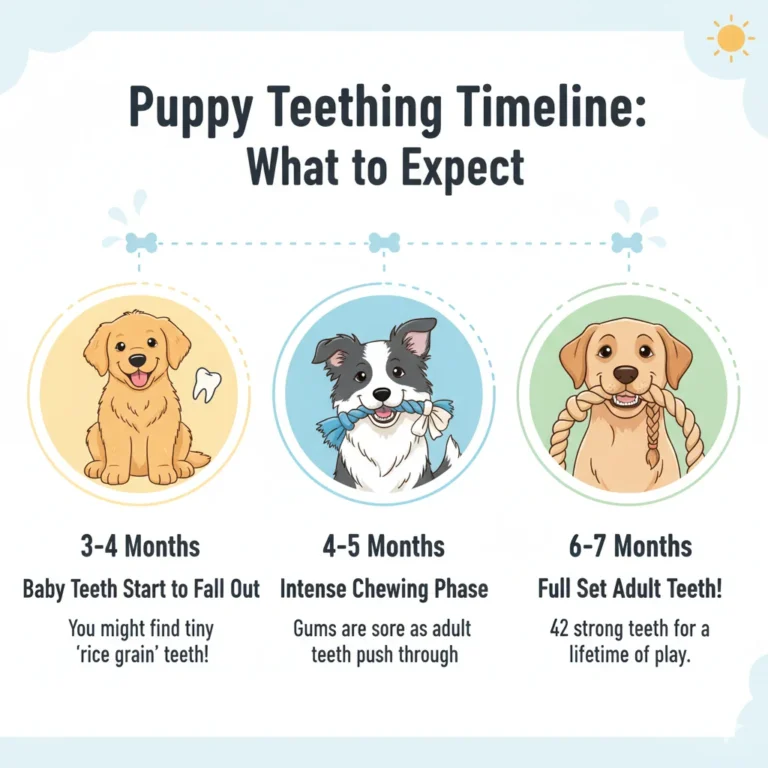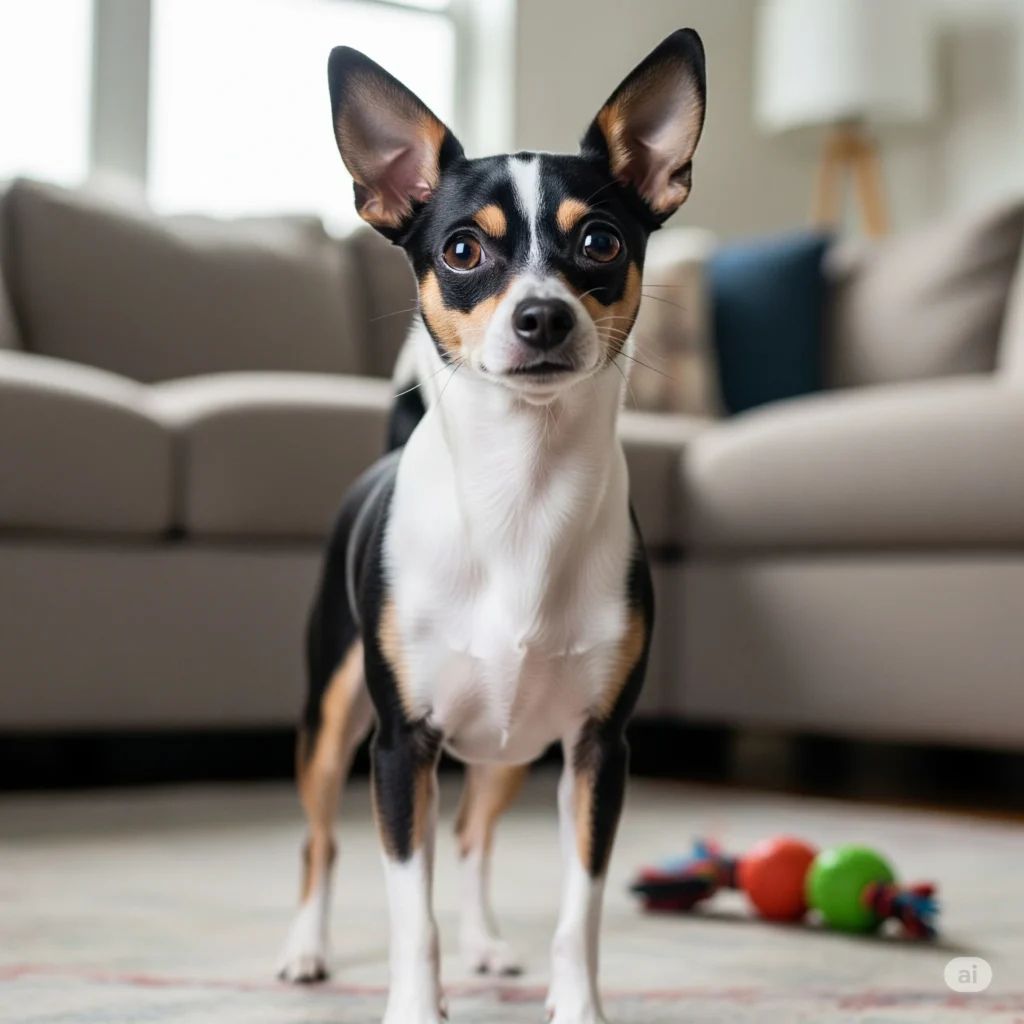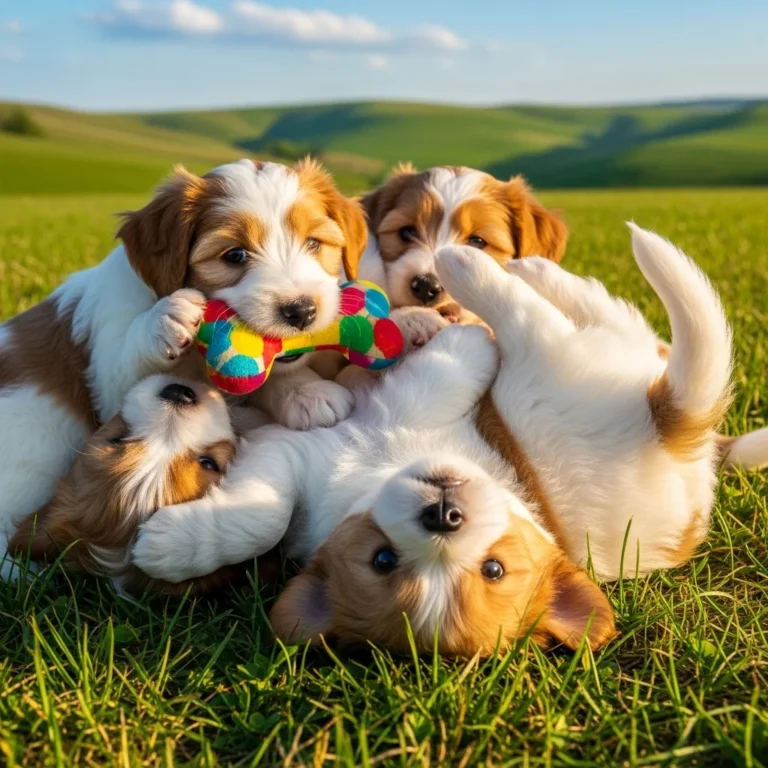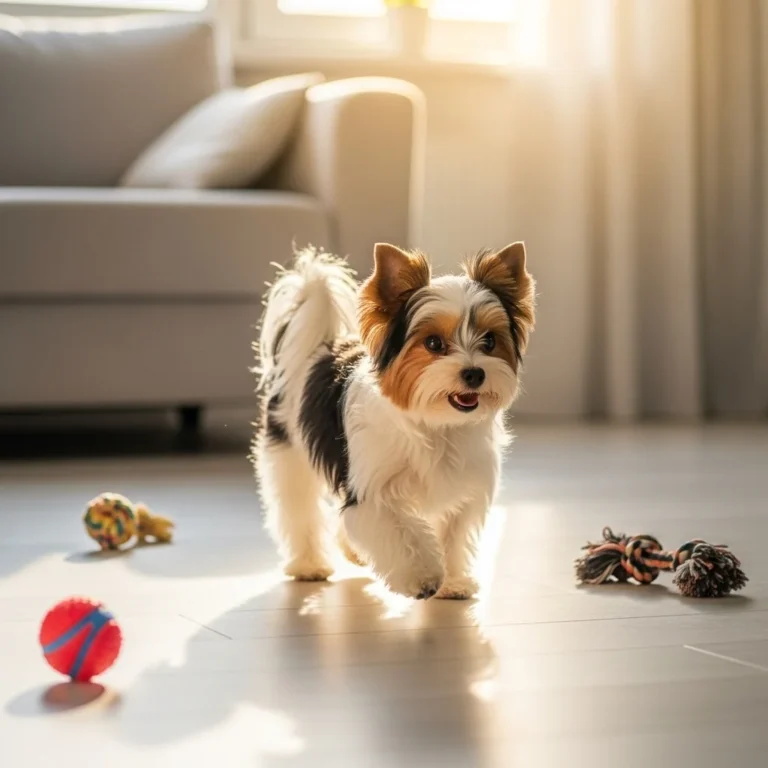
when do puppies lose their teeth
Hey there, fellow pup parent! Grab a comfy seat and maybe a cup of coffee. So, you’ve welcomed a new furry tornado into your home—isn’t it just the best? Between the zoomies, the cuddles, and those heart-melting head tilts, it’s pure magic. But have you ever been in the middle of a play session and felt those tiny, needle-sharp teeth clamp down on your favorite sock? Or found the corner of your coffee table looking like it’s been through a woodchipper?
Ah, yes. You’ve entered the legendary puppy teething phase. It can feel a bit chaotic, right? I remember when my golden retriever, Barnaby, was a little land shark. I thought I’d never have a pair of sweatpants without holes again! But here’s the secret: it’s a totally natural, and honestly, fascinating process. With a little know-how and a lot of the right chews, you and your fur-ball will get through this together. Think of it like a human baby cutting teeth – there’s some drool, some fussiness, and an undeniable need to gum everything in sight.
For our puppies, this is how they build the strong, healthy chompers they’ll need for a lifetime of crunching kibble and playing tug. So, let’s grab our virtual magnifying glasses and dive into the when, the why, and the how of puppy teething!
related: How Many Teeth Do Dogs Have? Count & Care Guide!
The Teething Timeline: When and What to Expect
It feels like those tiny puppy teeth just erupted, doesn’t it? One minute you’re admiring their little needle-teeth, and the next, you’re wondering where they all went! The transition happens faster than you can say “drop it!” Understanding this timeline is like having a secret map to guide you through the chewing marathon.
When do puppies start losing their puppy teeth?
Our furry friends are born completely gummy, which is probably for the best! Those adorable little “milk teeth” (the official name is deciduous teeth, but I like “baby teeth”) start peeking through between 3 and 6 weeks old. By the time they’re ready to come home with you, they usually have a full set of 28 of these temporary chompers.
The great tooth exodus typically begins around 12 to 16 weeks of age, which is right around 3 to 4 months old. Sound familiar? It’s often just when you feel like you’re getting into a groove with your new buddy.
“It’s a very common age for owners to start noticing small changes in their puppy’s chewing habits,” notes Dr. Sarah J. Wooten, DVM, a small animal veterinarian with over 20 years of experience. “They might find tiny teeth on the floor, or just notice their puppy’s breath is a little different.”
At what age do puppies get their adult teeth?
Nature is pretty efficient! As those baby teeth make their exit, the permanent replacements are already lined up and ready for their grand entrance. Your pup will usually have a complete set of 42—yes, forty-two!—adult teeth by the time they’re about 6 to 7 months old. That’s a whole lot of power for chewing toys and enjoying dinners! The incisors (the little ones at the front) usually pop in first, followed by the canines (the fangs), pre-molars, and finally, the big molars in the back.
How long does puppy teething last?
From the first wiggly tooth to the last big molar settling in, the entire teething process is a bit of a marathon. Generally, you can expect your puppy to be in full-on teething mode from about 3 months of age until they are 6 to 7 months old. That’s a solid 3 to 4 months of dedicated chewing! I know it can feel like forever when your furniture is under siege, but trust me, in the grand timeline of your dog’s life, it’s just a brief, toothy chapter.
Do puppies lose all their baby teeth?
They sure do! Just like kids, puppies should lose every single one of their 28 baby teeth to make room for their 42 permanent adult teeth. This is a super important part of their development. If a baby tooth decides to stick around when it shouldn’t, it can cause some issues, which we’ll chat about later.
Signs & Symptoms: Recognizing the Teething Process
Our pups can’t exactly tap us on the shoulder and say, “Hey, my gums are killing me!” But they have their own ways of telling us. Learning their “teething language” is key to helping them feel better.
What are the signs that my puppy is teething?
You’ll likely notice a combo of these clues. It’s like putting together a puzzle!
- Increased Chewing: This is the big one! Your puppy will have an almost unstoppable urge to chew on, well, everything. The remote, your shoes, the leg of the chair… This isn’t them being naughty on purpose; it’s their instinctive way of soothing that gnawing gum pain and helping those baby teeth work their way out.
- Drooling: Some pups might turn into a little fountain, with more drool than usual thanks to irritated gums.
- Red or Swollen Gums: If you can sneak a peek inside their mouth (make it a positive experience with treats!), you might see that their gums look redder or a bit puffy, especially where a new tooth is trying to break through.
- Small Spots of Blood: Don’t panic if you see a tiny speck of blood on a chew toy or on the floor. It’s completely normal when a tooth falls out—just like with human kids.
- Reluctance to Eat or Sensitivity: Imagine having a sore mouth and trying to eat hard kibble! Some puppies might be a bit pickier with their food or might flinch if you try to touch their muzzle.
- Whining or Fretfulness: Discomfort can make even the happiest pup a little more vocal or restless.
- Finding Tiny Teeth: This is the puppy tooth fairy jackpot! You might discover a tiny, rice-grain-sized tooth on the carpet or embedded in a soft toy. I used to save Barnaby’s in a little jar!
- Bad Breath: Puppy breath can take a turn for the worse during teething due to mild inflammation and bacteria hanging out around the new teeth.
Is it normal for puppies to bleed when they lose teeth?
Yes, it’s absolutely normal to see little spots of blood! When a puppy tooth falls out, it’s a tiny wound. You might see a minuscule amount of blood—just enough to leave a small stain on a toy. It should never be a lot of blood. If you see more than a speck or two, or if the bleeding doesn’t seem to stop, definitely give your vet a call.
Why is my puppy excessively biting/chewing during this time?
This isn’t just them being a tiny terror, I promise! That excessive chewing is driven by a deep, biological need to relieve the discomfort and pressure in their gums. “Chewing provides pressure that can soothe sore gums and help loosen baby teeth,” explains Dr. Lisa Lippman, DVM, a popular veterinarian in New York City. “It’s important to direct this natural instinct towards appropriate chew toys rather than your hands or furniture.”
Think of it this way: their gums are itchy, sore, and under construction. Chewing is like a fantastic, satisfying massage from the inside out. It feels good and helps guide those big adult teeth into their proper places.
How can I tell if my puppy has lost a tooth?
Often, you’ll have no idea! They usually swallow the tiny teeth while eating or chewing, which is perfectly harmless. But sometimes, you get lucky and find one of those little pearly whites on the floor or in their bed. They’re tiny and often look a bit translucent. You can also do a gentle lip lift and peek inside—you might spot a new gap or see a shiny new adult tooth already poking through.
Do puppies swallow their baby teeth?
Most of the time, yes! When a baby tooth falls out, it’s usually during a meal or a chew session, and the tiny tooth gets swallowed with everything else. It’s completely safe—the teeth are so small they pass right through their digestive system without a problem. So, if you never find a single tooth, don’t fret. Your puppy is just handling the “clean-up” themselves!
Puppy Discomfort & Pain Management
Let’s be real, teething isn’t a walk in the park for our little buddies. Their gums are sore, and they can get pretty fussy. Our job is to be their comfort crew and help them through it.
Is teething painful for puppies?
While we can’t ask them, we can be pretty sure that teething is at least uncomfortable, and at times, probably downright painful. Imagine a new tooth pushing its way through your gums—yikes! That discomfort is the main driver behind all that chewing. Providing great outlets for that instinct is our number one way to manage their pain.
What can I give my puppy for teething pain?
This is so important: never, ever give your puppy human pain meds like ibuprofen or acetaminophen. These are toxic and can be fatal for dogs.
Instead, let’s focus on safe, vet-approved soothers:
- Teething Toys: This is your first line of defense! A good, appropriate chew toy is often the best medicine.
- Frozen Treats: Cold is like a miracle worker for sore gums. Think frozen carrots, puppy-safe ice cubes, or specially made frozen treats.
- Puppy-Specific Dental Chews: Some chews are designed to be softer for tender mouths and can help massage gums.
- Consult Your Vet: If your pup seems to be in serious pain, isn’t eating at all, or is super lethargic, ring your vet. They might have specific suggestions, but this is usually only for extreme cases.
“A vet visit is always warranted if you are concerned about your puppy’s pain level,” advises Dr. Gary Richter, DVM, a veterinary health expert and author. “They can rule out other issues and provide tailored advice.”
Are there specific toys that help with teething?
Oh, yes! The right toys can make all the difference. You’re looking for toys that are:
- Durable but Gentle: They need to withstand chewing but not be so hard they risk cracking those new adult teeth. If you can’t bend it or make an indent with your thumbnail, it’s probably too hard.
- Textured: Nubs, ridges, and bumps feel amazing on sore gums.
- Safe & Size-Appropriate: Non-toxic materials and a size they can’t choke on are a must.
My all-time favorites include:
- Kong Toys: The holy grail! Stuff them with a little peanut butter (xylitol-free!), wet food, or yogurt and freeze them. The cold and the challenge are a winning combo.
- Rubber Teething Rings: Look for ones made specifically for puppies.
- Rope Toys (Supervised Only): Great for flossing, but always watch to make sure they aren’t swallowing the strings.
- Soft, Flexible Chew Toys: Some brands make amazing softer rubber toys perfect for tender mouths.
Always keep an eye on your pup with any new toy to make sure they’re playing safely!
Can I use ice or frozen treats to soothe a teething puppy?
Yes, please do! Cold is a fantastic, natural pain reliever. Here are some of my go-to’s:
- Ice Cubes: Some pups love chasing and crunching them. Just ensure they’re not a choking hazard.
- Frozen Carrots: A classic for a reason! They’re cold, crunchy, and low-calorie.
- Frozen Kongs: As mentioned, these are superstars.
- Frozen Washcloth: Dampen a clean cloth, twist it, and freeze it. It’s a fantastic, textured chew toy—just supervise so they don’t eat the fabric.
- Store-Bought Frozen Puppy Treats: There are so many great options out there now.
Should I be concerned if my puppy isn’t eating much while teething?
It’s not uncommon for a pup to have a slightly off appetite when their mouth is super sore. If they’re still eating a bit and have their normal puppy energy, it’s usually okay. But if your puppy completely refuses food, seems super low-energy, or has other symptoms like vomiting or diarrhea, it’s vet time. That’s likely more than just teething. Pro tip: try softening their kibble with warm water to make it easier and more appealing.
Potential Problems & When to Consult a Vet
Most puppies breeze through teething, but sometimes, things don’t go exactly according to plan. Knowing what to watch for helps you be the best advocate for your pup.
What are common problems during puppy teething?
While not super common, a few issues can pop up:
- Retained Deciduous Teeth: This is the big one—when a baby tooth doesn’t fall out and the adult tooth comes in right beside it.
- Fractured Teeth: Puppies can break a tooth chewing on something too hard.
- Gingivitis: Inflammation can sometimes get out of hand.
- Malocclusion: This is a misaligned bite, often caused by retained teeth.
What is a retained puppy tooth?
A retained puppy tooth is exactly what it sounds like—a stubborn baby tooth that just won’t leave the party, even after the adult tooth has shown up. You’ll see two teeth in one spot! This is most common with the canine teeth.
“Retained baby teeth are a significant concern because they can lead to a host of problems,” warns Dr. Karen Becker, DVM, a proactive and integrative wellness veterinarian. “They create extra spaces where food and bacteria can get trapped, leading to plaque, tartar buildup, gum disease, and even damage to the permanent teeth.”
It also messes with the adult tooth’s placement, leading to a crooked bite. If you spot a double tooth, call your vet. They’ll likely recommend pulling the baby tooth to make room.
When should I be worried about my puppy’s teething process?
While some grumpiness is normal, these are red flags that need a professional’s opinion:
- A lot of bleeding, not just tiny spots.
- Not eating at all, especially with lethargy.
- Acting very sick or profoundly tired.
- Vomiting or diarrhea (these are NOT normal teething symptoms).
- Obvious, severe pain (constant crying).
- Swelling in the face or jaw.
- Any retained baby teeth.
- A broken or chipped tooth.
When in doubt, call your vet! It’s always better to be safe.
Do I need to check my puppy’s mouth for lost teeth?
You don’t need to do a daily audit, but getting your pup comfortable with you handling their mouth is a priceless skill for life. It makes vet visits, teeth brushing, and medication-giving so much easier. Once a week or so, gently lift their lips and have a look. You’re checking for those retained teeth, any major swelling, or broken chompers. Make it a positive, treat-filled experience!
Can teething cause other health issues in puppies (e.g., diarrhea, fever)?
Generally, no. Teething is a local event in the mouth and shouldn’t cause body-wide issues like diarrhea or a fever. If your puppy has these symptoms, it’s probably a coincidence and points to something else, like a bug, parasites, or a dietary indiscretion. If your pup has diarrhea, is vomiting, or has a fever, please contact your veterinarian right away.
Training & Behavior During Teething
This phase can test your patience, I won’t lie! The nipping can be frustrating, but with a positive approach, you can steer that behavior in the right direction and save your belongings.
How can I stop my puppy from biting me during teething?
The goal isn’t to eliminate biting (it’s a natural instinct!), but to teach them bite inhibition—how to control the pressure—and what is acceptable to chomp on.
Here’s the game plan:
- Redirection is Your Superpower: The instant those teeth touch your skin, say “Oops!” in a cheerful voice and immediately shove an appropriate chew toy into their mouth. Praise them like crazy when they chew the toy instead.
- The “Yelp and Stop”: If the bite was hard, let out a high-pitched “Yipe!” or “Ouch!” and immediately stop all play. Turn away or even walk out of the room for 15 seconds. This teaches them that biting hard makes the fun disappear.
- Time-Outs: If redirection isn’t working, a brief (30-60 second) time-out in a boring, safe space (like a playpen) can help them reset.
- Bitter Sprays: For furniture and other off-limits items, a taste deterrent spray can be a lifesaver. Just test it on a hidden spot first!
- Consistency is Everything: Everyone in the family has to be on the same page. Mixed messages will just confuse your puppy.
“Puppies learn bite inhibition from their littermates and mother,” explains Victoria Stilwell, a renowned dog trainer and behavior expert. “When they come to us, we need to continue that education. It’s not about punishing them, but teaching them an appropriate level of pressure.”
What is appropriate chew training for a teething puppy?
This is all about making the right choices the most rewarding ones!
- Variety is the Spice of Life: Don’t just have one toy. Have a basket! Offer different textures—rubber, rope, soft, frozen—so there’s always an appealing option.
- Strategic Placement: Keep chew toys in every room your puppy hangs out in. This makes the “swap” easy when they go for the furniture.
- Praise the Good Stuff: Catch them in the act of chewing an approved toy and shower them with “Good dog!” and pets. They’ll learn that chewing their own stuff is a very rewarding behavior.
- The Toy Rotation: Keep things interesting by rotating toys. A toy that’s been in the closet for a week feels brand new and exciting!
- Supervise, Supervise, Supervise: You can’t redirect a behavior you don’t see. Keeping a close eye on them, especially in new environments, is key to successful training.
I hope you have answered the question: When do puppies lose their baby teeth?
please leave comment
you may like it





sources
- https://www.akc.org/expert-advice/puppy-information/timeline-of-puppy-teething/
- https://www.purina.com/articles/dog/puppy/health/puppy-teething
- https://vetster.com/en/wellness/puppy-teething-a-guide-to-the-teething-process
- https://www.rspcapetinsurance.org.au/pet-care/preparing-for-a-new-pet/teething-tips-puppy
- https://lanevet.com/blog/puppy-teething/
- https://www.woofpurnayvet.com.au/ultimate-guide-to-puppy-teething
- https://yourpetandyou.elanco.com/us/new-pets/puppy-teething-timeline-and-tips
- https://www.thesprucepets.com/puppy-teething-2804965

